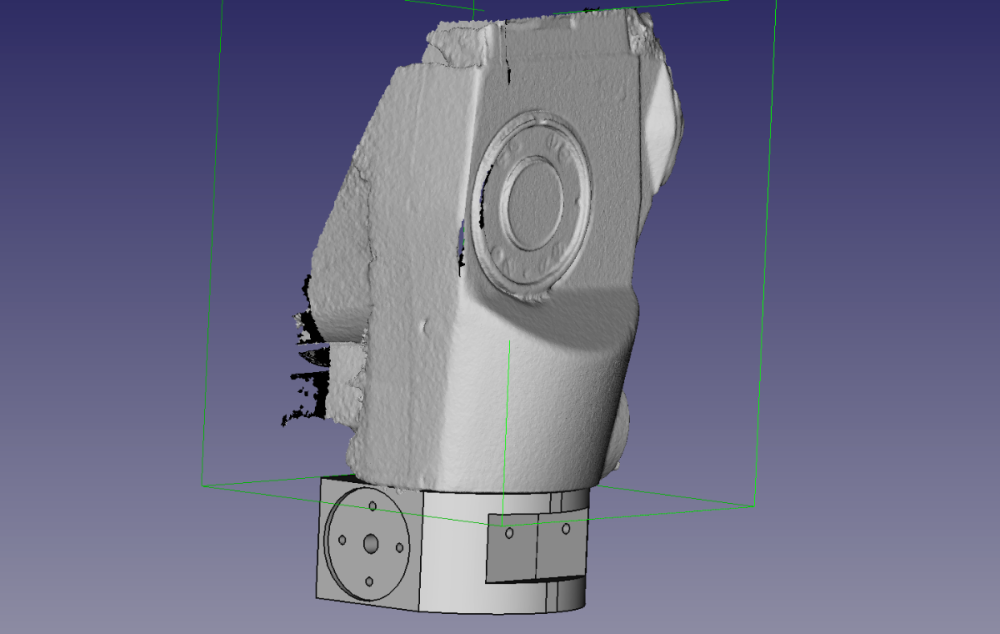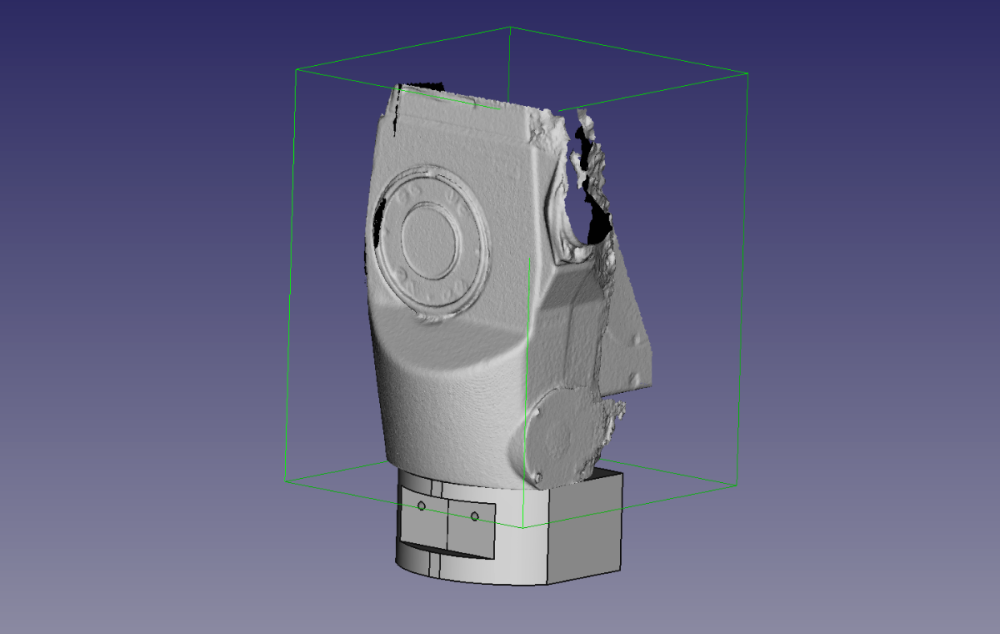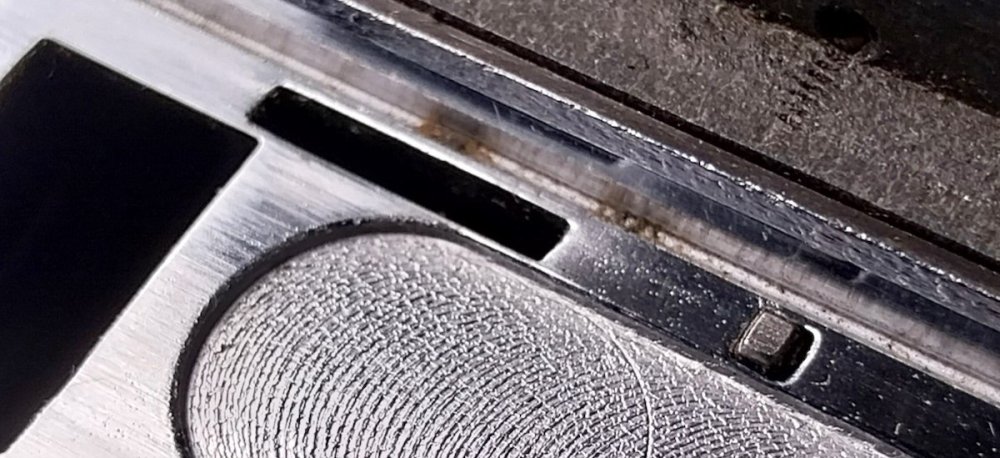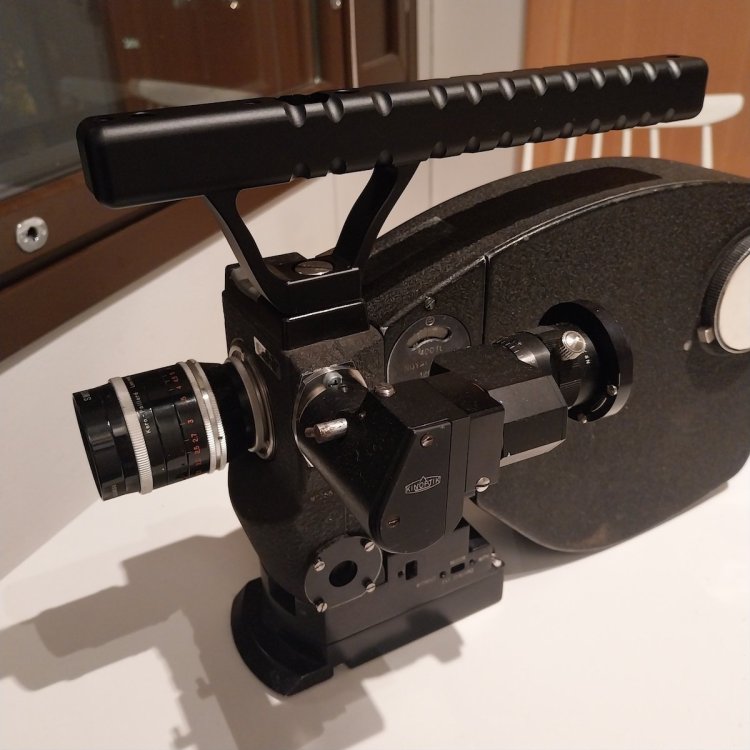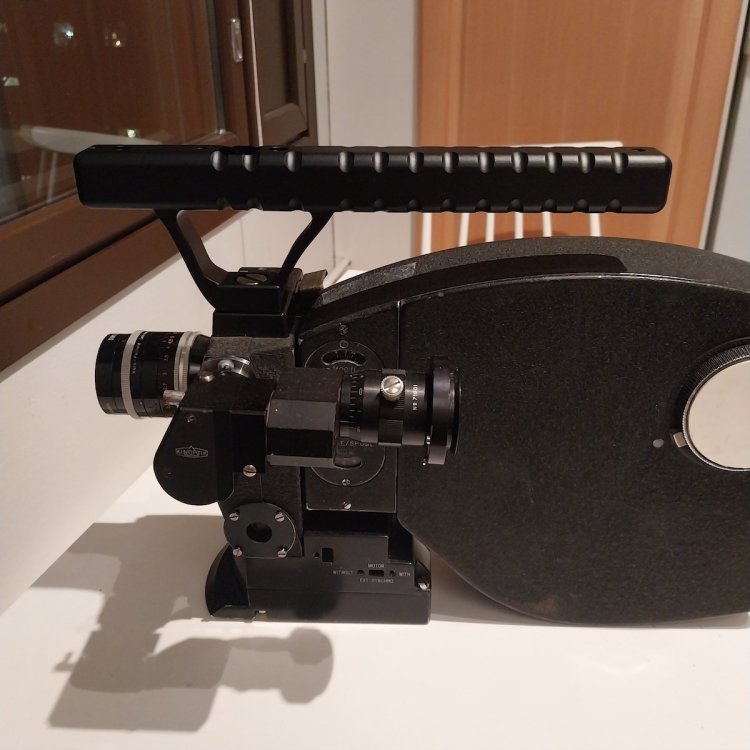-
Posts
3,314 -
Joined
-
Last visited
Everything posted by Aapo Lettinen
-
I am investigating the possibility to make a small batch of simple affordable 3-speed ACL crystal motors to fund the "ACL2025" 15-speed motor project better. the 3-speed ACL motor would have similar mounting system than the 2-speed model, the electronics box would be smaller (about 65% of the size of the 2-speed model's box) and has only the basic controls so no double speed switch, no top speed limiter on variable. Similar older technology crystal sync stuff than the 2-speed model but more compact and a bit sturdier construction. Compatible with my ACL rods base etc. accessories. 3 crystal speeds of 24fps, 25fps, 33.333fps and variable speed. Works with 14.8v to 19v batteries like my previous ACL motors. Price 850usd , I would assemble the final motors in April-May 2025 and would need to know in January if anyone wants to order one and them paid for before mid February. Prepaid stuff like usual, the cnc machining costs quite a lot so need to have them paid for to be able to make them.
-

Rebuilt Krasnogorsk3 - Video assist, PL, Super16mm gate
Aapo Lettinen replied to Jacob Epstein's topic in 16mm
I would probably get the npr with basic 2speed crystal motor in N16 and some basic lens and shoot some sync sound spec projects with it, using all the possible money on film stock instead of beefing up the camera. Shoot in 4:3 and concentrate on the storytelling instead of worrying about s16 or cool expensive lenses. If you get attention with those projects you can try to get more budget to rent a sr3 for some bigger project. The sync sound capability and relatively silent operation is the main value of these more expensive cameras . Kinors are pretty good cameras but yes it is difficult to convince people to use one if they dont know how it compares to the alternatives. I think if hesitant you should just try one by yourself and see if you like the design. They have pros and cons, one of the benefit is affordable good quality lenses -

Rebuilt Krasnogorsk3 - Video assist, PL, Super16mm gate
Aapo Lettinen replied to Jacob Epstein's topic in 16mm
Eclair NPR or ACL and arri16s is couple of thousands max, not more. The highest ebay prices are just ripoffs and should not be considered anywhere near the real price of these cameras. One can get a working NPR with original motor for something like 1200 to 1400 price range without lenses and if N16. the S16 mod will cost a little but would probably still stay well under 2000usd. the ACL is a little bit more pricey and the original motors are really hit and miss so I would recommend getting one of my ACL motors for it instead of trying to manage with the unreliable original ones. the Shritfilm camera is really a scam and not that usable and costs a fortune even if you would be able to get one. It should be forgotten completely by now. but there is alternative for it coming soon as far as I know which should be well working... Max at K3Super16 is working on a built-in motor for the K3 camera and he is able to cla and modify the krasnogorsks to very good working condition and make pl and s16 mods as well. If you want a K3 built in motor system just contact Max. --- At the moment I recommend Eclair NPR and ACL cameras and the Kinor16 as they are the most cost effective solutions for lower budget indie filmmaking. If you can do with short load mos camera then the arri16s might also do but I would really go with the eclairs if you can just get reliable motors for them. Or the Kinor if wanting to get more affordable accessories. You will not get paid work with these, would need something like Aaton XTR or Arri SR2 / 3 and have full lens kits and video taps and everything, easily costs tens of thousands combined by todays prices. So get a lower priced camera which works for your use right now and if you get paid work just rent the camera kit if needed, then if there is like 100 days a year of paid work you can purchase a high end camera kit. Other people don't have high end owned kits either, they have something more basic like the ACL and then rent the SR3 or 416 if the client pays for it. If people choose you only for your gear you won't get revenue for it anyway because they are just after the lowest price not talent. Be a very good cinematographer and they will hire you even if you own nothing and dont even have a car so they need to pick you up every day 😄 -

Rebuilt Krasnogorsk3 - Video assist, PL, Super16mm gate
Aapo Lettinen replied to Jacob Epstein's topic in 16mm
yes a leaf spring could help a bit but there is tons of other stuff with the camera which would require updating as well and after all that done there is basically no original parts in it anymore so not worth it by my opinion unless making some kind of youtube project to get the views instead of wanting a camera for actual filming. a crystal sync Kinor2m or Eclair NPR would be cheaper than getting enough custom mods on the K3 made to make it work for semi-pro stuff and even then the K3 would have weak gears and bearings and just would not last in use compared to a proper well made camera body. The Krasnogorsk cameras were originally made for Soviet amateur film club use, occasionally shooting a roll or two and they work for that kind of stuff perfectly well. Shoot tens of thousands of feets of film per month with it and you quickly end up it worn down and full of dust from the gears and bearings and so worn down pulldown that it can barely advance any film anymore. It tells a lot of the quality difference that I have some K1 and K2 cameras which I haven't used in like 10 years because they are just not worth the effort and time, last time I made some super heavy crude mods on one to see if it makes sense to hand crank them and then just lost interest before filming anything and threw it in the garage misc box again. It is interesting camera design but not very good for serious use unless you use it exactly like it was originally designed to be used for: with original lenses and spring drive and shooting some pickup shots here and there which will or will not be used as additional footage. Kinor with 100ft mag and my motor is not much larger than the Krasnogorsk and not that much heavier either. It is just that people want to buy a cheap cheap camera and then build on it to spend 10x the price on mods and accessories instead of spending 8x the price to get a better camera to begin with which has ball bearings and all other "proper stuff" in places where the difference matters -

Rebuilt Krasnogorsk3 - Video assist, PL, Super16mm gate
Aapo Lettinen replied to Jacob Epstein's topic in 16mm
You would need to machine new gate and movement for it and likely change the pulldown design completely. Much cheaper to buy kinor or eclair which are much better cameras anyway. K3 is ok camera if it is cheap but endless modifications just make it super expensive entry level camera which costs like arri but has only 10% of the image quality -
I am making a electronically stabilized (not crystal sync but should still be pretty good accuracy) speed controller for 15epss motors. It is basically a replacement for the original speed control box of these motors as it is getting hard to find the original boxes nowadays. I am making a as-simple-as-possible device with couple of speed presets and which works at 24 volts. No displays or anything fancy. The device is way smaller than the original konvas controller, I am intending using the same casing than my Eclair 16-speed and 12-speed controllers use so very compact. Price 450usd and should be finished in the next following months. It is needed to replace the motor connector with new different one and to internally connect the wires inside the motor handle differently so that the motor works at 24 volts instead of original 48 volts. This modification is simple enough to be user made but I can arrange it here too if needed. Let me know if wanting to order a controller like this. I have possibility to make crystal sync modification for 15epss too but they cost about a grand and most users don't need the features so wanting to see if this simple more affordable device would have use for them 🙂
-

How Crystal Sync Motors work and modern sollutions
Aapo Lettinen replied to Tyler Fukuda's topic in General Discussion
I often get very depressed by trying to help people with their diy projects, that greatly affects my own work. I am trying to make something different than most people and have too much invested to not worry about anything or to give away stuff which I need the money back from to get food. Probably wont visit this thread later. Read the cp16r manual, it helps a bit with the research. Good luck with the project! ----- Kamran's motor seems to work pretty well. I personally usually test motors, among other tests, with TF930 frequency counter linked to gpsdo at 10s and 100s gate times to get really good idea about the real running speed and to have kind of scientific results rather than empirical stuff but if a motor holds the frame for many minutes then it is perfectly fine for sync sound stuff. -

How Crystal Sync Motors work and modern sollutions
Aapo Lettinen replied to Tyler Fukuda's topic in General Discussion
- -

How Crystal Sync Motors work and modern sollutions
Aapo Lettinen replied to Tyler Fukuda's topic in General Discussion
- -

How Crystal Sync Motors work and modern sollutions
Aapo Lettinen replied to Tyler Fukuda's topic in General Discussion
- -

How Crystal Sync Motors work and modern sollutions
Aapo Lettinen replied to Tyler Fukuda's topic in General Discussion
- -

How Crystal Sync Motors work and modern sollutions
Aapo Lettinen replied to Tyler Fukuda's topic in General Discussion
- -

new ALCS external footage counter for Aaton cameras
Aapo Lettinen replied to Aapo Lettinen's topic in Aaton
There is two orders so far so this Aaton counter will advance at steady pace and will be shipping in approx. two months. If wanting to order one, please let me know this month, preferably before 15th Jan. so that I know how much parts to order. One of the circuit boards and the front panel are already in production and will receive them at some point mid January. If wanting to order this Aaton counter, please let me know in January 2025 by DM here or on IG. facebook messages are unreliable but might work too. -
I will probably work on a completely new Bolex motor this Spring which works with 1:1 axle models if there is enough paid preorders to fund the project. it will be very high quality motor but rather expensive as well, around 1600usd or so. Basically it would have similar features than my ACL2025 crystal motor (15 or more crystal speeds, oled display with meters, cnc machined aluminium body, very high quality brushless motor drive, very accurate tcxo frequency reference, etc). Making this project possible depends on paid preorders as the machining and testing will become expensive and I have invested my own money on Eclair projects. But if someone is interested in ordering one, let me know (DM here or on IG. facebook messages are unreliable nowadays though might work too) . As said it will be around 1600usd and partially paid for beforehand, intended to be a very high-end Bolex motor option. (if needing something very affordable that cannot be made from scratch and would be necessary to use some original motor with Jason's controller instead)
-
Continuing work on the rod support base. I got a very basic 3d scanner now, helps modeling the shape of the rod support part when getting some kind of reference of the actual shape of the front of the camera, that round tilted surface is really hard to get right by measuring so saves lots of work to have even a super basic reference scan to use
-
"registering" means holding it still. If some movement would be adjusted by the technician to fall short and then move the final fraction with the pins that would be their choice but that is certainly not the only way "to do it correctly" to "be allowed to call it a reg pin". Most stable movements have the pins completely fixed and everything else moves around them. and more pins than one or two. different geometry needed then too. --------------- Here is what I talked about when calling the NPR's system "registration claw" rather than pin. It is heavily shaped and only stops movement by downward direction, nothing else. It also pops up before the pulldown claw has disengaged from the perf. So the idea is that the claw's upper surface stops the perf at predetermined position and then the pulldown can disengage. Kinor16cx-2m has this "real registration pin" which is very tightly fitting the perforation vertically. so it centers the film in up/down direction perfectly but is loosely fitting sideways so the lateral plate does all the work on horizontal direction. The pin engages slightly after the pulldown has retracted so it works very differently than the NPR's "claw"
-
My own ACL did not have a handle so I designed this thingy and got it cnc machined out of aluminium. Super heavy duty, even unnecessarily so (one could probably smash a brick wall to pieces with this without even scratching it much 😄 ) but it is pretty useful when wanting to have good balance with 400ft mags and tiny lens as the handle is intentionally very long to allow good grip near the balance point. I will probably wrap paracord around it to allow more comfortable grip when shooting in cold. for indoors use it is pretty good just as is and I added couple of 1/4 and 3/8 mounting points on top so that I can mount my 12-speed or 16-speed crystal controller on it 🙂 Let's see what kind of handle setups other people have on their cameras. Using just off-the-shelf Smallrig stuff or the original handle or something more custom?
-
- 1
-

-

Advice for indoor shoot on 500T
Aapo Lettinen replied to Peter Connell's topic in Lighting for Film & Video
shooting without filter and post correcting the balance has the disadvantage of potentially losing blue channel latitude because the blues become very dense and potentially difficult to scan the very brightest areas, so you may get burned/clipped/noisy highlights more easily. But it may be more practical to shoot without filters in some situations if filters are for some reason difficult to manage on-set (cleaning needs, reflections, not the right filter size available, etc). By my experience the end result is often not exactly the same (the extra amount of blue light easily creates additional in-lens reflections etc, the reds may be much thinner than would be optimal causing extra grain, etc) but it can be more than enough for most uses still. shooting without filters is common when wanting cool dusk/twilight look but if wanting to have normal or warm colours it may not be optimal to shoot with super cool blue look and then post correcting it (leading to underexposed reds and overexposed blues which you need to reverse in post prod to get anywhere near normal colours) if shooting without filters for normal or warm colours it should be rated 320 ISO and taken care not to ruin the highlights. if blue look is OK then 500 ISO rating would be fine -

Advice for indoor shoot on 500T
Aapo Lettinen replied to Peter Connell's topic in Lighting for Film & Video
you will lose the 2/3 stops if converting the footage to proper colour balance, whether that is done in-camera with 85/85B filter or shooting without filter and correcting in telecine/scanning or in digital grading. if shooting without 85 filter and NOT correcting the colour balance then the approximate sensitivity is 500 ISO outdoors. but you will end up with blue-ish image. if wanting to correct to normal colours then you will need to lower the blue channel level and green slightly and end up with the approx. 320 ISO no matter how you do the colour balance correction -

Bolex EL Mk3 - The camera nobody wants to repair
Aapo Lettinen replied to Nacho Guzman's topic in 16mm
sorry I laughed, that sound was like the camera is mocking you 😄 like "BEEEEP WRONG BUTTON!!!" almost sounds like a small summer but such a noise can be made by mechanical or electrical parts too. Are you sure there is no one in Europe servicing them? often it is more about what it can cost rather than if there is anyone available or not, but can be wrong... making new electronics is always a possibility but not sure if it is worth it for Bolexes, would probably cost like 1.5k per camera and one would probably need to change the outer body shape/control panel a little to make it work best so it would not look the same than the original. If you would have like three cameras then might make sense to build new electronics. Otherwise probably more practical to try to repair -
MOTOR SOLD! so the 2-speed and 10-speed motors are sold out now. if you would still need a motor for the ACL camera, please consider my "ACL2025" motor model, I am still collecting orders for a month or two and it is very advanced model with lots of crystal speeds, oled display with counters, cnc machined aluminium body, works at 12v, is compact and lightweight and does not need any original ACL electronics just like my other motors. the 2025 model is 1600usd.
-

What to pau attention to when buying a camera
Aapo Lettinen replied to Lucas Ferreira Gesser's topic in General Discussion
make sure that the accessories like displays, evf, memory cards, etc. are fully working and in good condition so that if the camera body itself is NG you can keep the accessories and buy another body which is working correctly. The oldest available Reds are like 15 to 17 years old and one really cannot expect a medium-quality camera to last even that long, so it is cool if it is working correctly and surprising if you get more than some two or three years of lifetime on it before it breaks completely beyond repair. If talking about the slightly newer ones, less than 10 years old then it might have some more years on the hood if lucky. I would get a kit which has good perfectly working accessories and then an additional camera body just in case. And make sure that you can still use the cameras if the single available original touchscreen display breaks. people are selling a lot of old "brain-only" Red cameras, it is because they purchased single accessories but had a spare brain because they tended to break often. So there is more brains available than vital accessories to make them working, especially on oldest dsmc models, and if buying only the brain you may never find a display and memory cards and reader to make it working. so first ensure you have all the necessary accessories secured before buying brain-only deals, otherwise the lone brain is just a paperweight which cannot record anything ever -
and being a spare camera it probably sits safely inside its pelican case most of the time so it is not exposed to elements and rough handling the same way than the main camera actually used for filming. Which makes it "more reliable" because it was in mint condition almost never been used until the main camera broke down 😄
-
switches, displays and connectors tend to be the most vulnerable part of camera's electronics so reducing their amount tend to make a camera more reliable in general. It still has lots of electronics inside but the exposed easy-to-break outer parts are reduced to minimum so that it "does not break as easily" 🙂
-
Npr has this pin-like reqistration claw which mostly stops film movement to one direction. So it steadies it but not as perfectly as a real pin. Cameras like Arri and Kinor16 have real reg pins. Old before end-of-80s 16mm cameras have larger tolerances overall than 90s and 2000s cameras because 16mm stock spec tolerances were tightened in 80s which allowed making better fitting tight tolerance film channels on cameras



